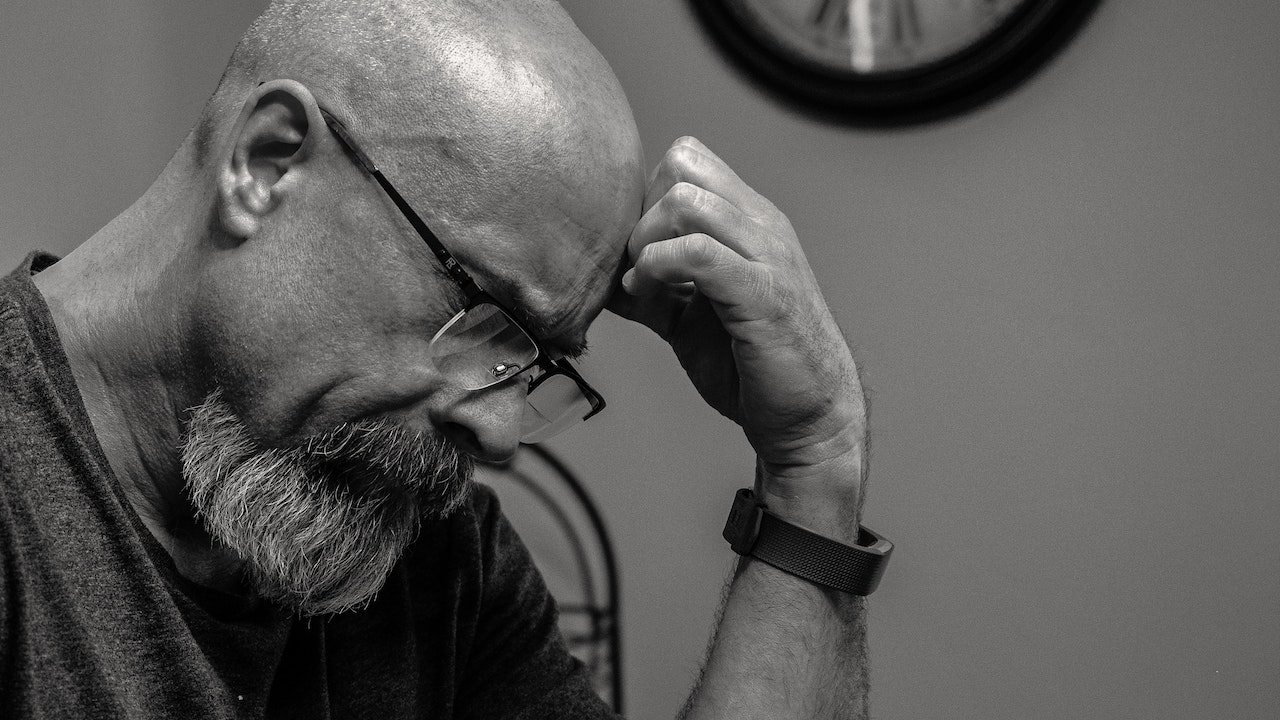Hair loss is a common concern among men as they age. While it can be a source of insecurity for some, it’s important to remember that hair loss is a natural part of life. In this article, we will explore various aspects of dealing with hair loss, including embracing baldness, treatments to prevent balding, hair replacement therapy, and more. By the end of this article, you’ll better understand how to navigate the challenges that come with hair loss and embrace your changing appearance.

Understanding Hair Loss
Before we dive into ways to deal with hair loss, it’s essential to understand what causes it. Hair loss can occur for various reasons, including:
- Genetics: Hereditary factors play a significant role in male pattern baldness. If your father or grandfather experienced hair loss, you may be genetically predisposed to it.
- Hormones: Changes in hormone levels, particularly the hormone dihydrotestosterone (DHT), can contribute to hair loss. DHT shrinks hair follicles, making them produce thinner and shorter hair until they eventually stop producing hair altogether.
- Age: As men age, it’s entirely normal for hair to thin and recede. This natural process is part of growing older.
- Stress: High levels of stress can lead to hair loss. Chronic stress can disrupt the hair growth cycle and accelerate hair loss.
Understanding the causes of your hair loss can help you make informed decisions about how to deal with it.
Embracing Baldness with Confidence
Dealing with hair loss is not just about finding solutions to regrow hair but also about embracing your changing appearance with confidence. Here are some tips to help you embrace baldness:
- Change Your Perspective: Instead of viewing hair loss as a negative aspect of aging, consider it as an opportunity to redefine your style and image. Many iconic figures, such as Dwayne “The Rock” Johnson and Jason Statham, have embraced their baldness and made it part of their signature look.
- Own Your Style: Consider adopting a new hairstyle that suits your balding pattern. Shaving your head completely can be a bold and empowering choice. Alternatively, you can go for a close-cropped style that minimizes the appearance of thinning hair.
- Confidence Matters: Confidence is attractive, and it can make a significant difference in how you perceive yourself and how others perceive you. Focus on building self-confidence through self-care, exercise, and positive thinking.
- Accessorize: Hats, caps, and bandanas can be stylish accessories that not only protect your scalp from the sun but also add flair to your overall look.
- Seek Support: Talk to friends and family about your feelings regarding hair loss. Sharing your concerns can be therapeutic, and you may find that others have gone through similar experiences.
Remember, embracing baldness is not a sign of defeat; it’s a statement of self-assuredness and authenticity.

Preventing Further Hair Loss
If you’re not ready to embrace baldness just yet, there are various treatments available to help prevent further hair loss. These treatments aim to slow down the progression of hair loss and, in some cases, even promote hair regrowth. Here are some options:
- Medications: Two FDA-approved medications, finasteride and minoxidil, are commonly used to treat hair loss. Finasteride works by reducing DHT levels, while minoxidil promotes blood flow to hair follicles. It’s essential to consult a healthcare professional before starting any medication.
- Low-Level Laser Therapy (LLLT): LLLT devices, such as laser combs and helmets, use low-level lasers to stimulate hair follicles and encourage hair growth. While results vary, some people have reported success with these treatments.
- Platelet-Rich Plasma (PRP) Therapy: PRP therapy involves injecting your blood’s plasma, which is rich in growth factors, into your scalp to stimulate hair follicles. This treatment is still evolving but shows promise in some cases.
- Hair Growth Shampoos and Topical Products: There are various shampoos, serums, and topical products on the market that claim to promote hair growth. While not all are scientifically proven, some may help improve the health of your existing hair.
- Hair Transplants: Hair transplant surgery involves taking hair follicles from one part of your body (usually the back or sides of your scalp) and transplanting them to the thinning or balding areas. It’s a more invasive but effective option for hair restoration.
It’s important to consult with a dermatologist or a hair loss specialist to determine the most suitable treatment for your specific situation.
Hair Replacement Therapy
For men who have lost a substantial amount of hair and wish to restore a full head of hair, hair replacement therapy is an option worth exploring. Hair replacement therapy includes various methods to replace lost hair, each with its own pros and cons:
- Wigs and Hairpieces: High-quality wigs and hairpieces can provide a natural-looking solution for hair loss. They are available in various styles and materials, allowing you to choose one that suits your preferences.
- Hair Weaving: Hair weaving involves attaching hair extensions or weaves to your existing hair. This method can create a fuller appearance, but it requires regular maintenance to keep the weave in place.
- Hair Transplants: As mentioned earlier, hair transplant surgery is a surgical procedure that involves transplanting hair follicles from one area of your body to another. It offers a more permanent solution to hair loss.
- Scalp Micropigmentation (SMP): SMP is a non-surgical procedure that involves tattooing tiny dots on your scalp to mimic the appearance of hair follicles. It can create the illusion of a buzzed haircut or a closely cropped style.
- Hair Systems: Modern hair systems, or non-surgical hair replacements, use advanced technology to create a natural look and feel. These systems are customized to fit your scalp and can be a convenient and effective solution.
Before opting for any hair replacement therapy, it’s crucial to consult with a reputable provider and carefully consider your goals and preferences.

Lifestyle and Hair Health
In addition to medical treatments and hair replacement options, there are lifestyle changes you can make to support hair health and potentially slow down hair loss:
- Balanced Diet: A diet rich in vitamins, minerals, and proteins can help maintain healthy hair. Foods like eggs, nuts, fish, and leafy greens provide essential nutrients for hair growth.
- Stress Management: As mentioned earlier, stress can contribute to hair loss. Practicing stress-reduction techniques such as meditation, yoga, or deep breathing exercises can help.
- Regular Exercise: Physical activity improves blood circulation, which can benefit your scalp and hair follicles. Aim for regular exercise to keep your body and hair in good shape.
- Gentle Hair Care: Avoid aggressive hair care practices, such as excessive heat styling and tight hairstyles, which can damage hair and exacerbate hair loss.
- Scalp Health: Keep your scalp clean and well-moisturized. Avoid harsh shampoos and consider using products specifically designed for scalp health.
- Limit Smoking and Alcohol: Smoking and excessive alcohol consumption can contribute to hair loss. Reducing or quitting these habits can have a positive impact on your hair and overall health.
Acceptance and Self-Confidence
Ultimately, the key to dealing with hair loss is acceptance and self-confidence. While it’s natural to want to maintain a full head of hair, it’s equally important to recognize that hair loss is a part of life for many men. Embracing who you are and how you look can lead to a happier and more fulfilling life.
- Focus on What Matters: Remember that your worth is not determined by the amount of hair on your head. Focus on your accomplishments, character, and the relationships you build.
- Seek Support: If you find it challenging to accept your hair loss, consider talking to a therapist or counselor who can help you navigate your feelings and boost your self-esteem.
- Surround Yourself with Positivity: Surround yourself with friends and loved ones who support and uplift you. Positive relationships can bolster your self-confidence.
- Set New Goals: Use this opportunity to set new personal and professional goals. Accomplishing new challenges can boost your confidence and sense of self-worth.

Dealing with hair loss is a journey that many men will face at some point in their lives. Whether you choose to embrace baldness, explore treatments to prevent further hair loss or opt for hair replacement therapy, remember that your appearance does not define your self-worth. Embrace your changing image with confidence, and focus on the aspects of life that truly matter—your character, relationships, and personal growth. Hair loss may be a part of your story, but it’s just one chapter in the book of your life.
Hope For Fat People
“HOPE FOR FAT PEOPLE” uplifts viewers with stories of weight loss and practical advice, emphasizing the importance of self-love and sustainable change on the path to a healthier life.
Mornings with Tom Episode 4!
In “Mornings with Tom Episode 4,” we dive into a world where personal growth meets cutting-edge technology. Tom shares insights on improving life bit by bit, from health to finances, emphasizing the power of cryptocurrencies and the magic of daily routines for success.
Getting Ready With Tom Day 2!
In the second episode of “Getting Ready With Tom Day 2!!”, Tom shares his morning routine and offers tips on health, grooming, and finances. He talks about Semaglutide for weight loss, personal grooming tricks, and smart money management.






Comments are closed